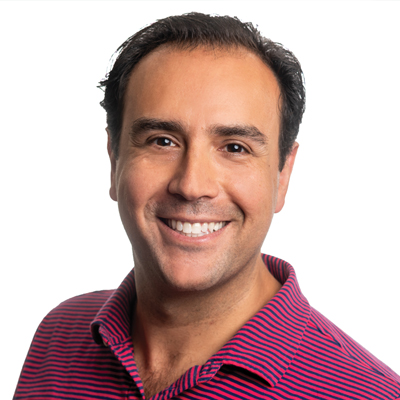Runoffs
Losing Weight
Closed-block policies make life insurers less agile and are costly to maintain. But there are ways to shed this unproductive line of business.
Key Points
- Issue: Life insurance and annuities providers are grappling with blocks of policies that are no longer sold but still on their books.
- Players: Firms are finding a niche in advising legacy carriers on solutions.
- The Fix: Typically, insurers have turned to reinsurance, runoffs, “lift and shifts” or a combination to lower their costs.
Life insurance is a long game. Think in terms of windows that can last decades. Even 50 years or more.
That long of a time frame can leave insurers with a problem that's part technology and part market forces: what to do with those policies that may be older or unprofitable? Vinod Kachroo, chief information officer at SE2, said consolidation in the industry has only accelerated the issue.
Welcome to closed-block life.

Most of these companies, particularly tier-one and tier-two companies, have grown through M&A. They’ve grown through acquisitions. So they have a big cobweb of legacy technologies and platforms which are somewhat loosely tied together and creating a very, very high level of complexity.
Vinod Kachroo
SE2
Closed blocks of life insurance are essentially a segregated group of policies and contract obligations as well as the assets that back them. The stack of policies is deemed “closed” because no business flows into it with the exception of renewal premiums, and it continues until the final policy of the bunch is no longer in force.
Kachroo and his firm help carriers deal with closed blocks of life and annuities policies, the policies that are still active though the carrier no longer sells that product. The company, which falls under the Eldridge Industries umbrella, has more than $100 billion in assets under management and has converted 2.5 million policies from legacy computer systems onto its digital platform since being founded in 2005.
“Most of these companies, particularly tier-one and tier-two companies, have grown through M&A. They've grown through acquisitions,” he said.
“So they have a big cobweb of legacy technologies and platforms which are somewhat loosely tied together and creating a very, very high level of complexity. Complexity from a technology perspective and technology from a maintenance perspective; complexity from an operating model perspective. So it is a huge problem to solve and a fantastic opportunity,” added Kachroo.
Kachroo speaks of the “conversion factory” that mixes technology, process and people with SE2's unique actuarial-led conversion methodology to enable the deals.
While he holds the firm's client list close to the vest, recent publicly announced deals have included one multiyear agreement announced in October 2019 with several insurance subsidiaries of Nassau Financial Group to convert and manage existing policies spread across multiple legacy systems onto its Aurum digital platform. In February, SE2 announced it was working with USAA Life Insurance Company to offer a new annuity product.
Closed blocks make up a big part of insurers' business. While current figures were not available, in its 2016 Managing Life Insurance Closed Blocks report, Celent found 85% of insurers polled had such business in their portfolio. One third of the respondents had over 1 million policies that were closed, while two-thirds had between 100,000 and 250,000. Annuity policy volumes were on average 100,000 to 250,000 for each insurer.
The majority of insurers said their closed blocks accounted for more than 50% of their premiums.
In the United States, the first wave of closed blocks resulted from insurance companies demutualizing in the late 1990s and early 2000s, according to the report.
Tom Scales, who heads up North American life and health insurance research at Celent, said he looks at this issue in terms of 150 years. Someone may well be still honoring a policy written 75 years ago. Likewise, policies written today could still be active 75 years from now.
In the intervening time, major tax changes radically alter the life insurance industry, as happened in the 1980s. Competition and investment strategies change the game. And as a result, carriers are often left holding policies that are no longer on the front burner but still need to be dealt with, he said.
“The systems they're running now could be 10, 20, 30, 40 or even 50 years old and that's not even that surprising. So they're really struggling with digital,” Scales said. “It really all comes down to the length of time of a policy.”

It’s not one-size-fits-all. Every carrier’s got a decidedly different play depending on what their customer base looks like; what products they have in their portfolio and the age or demographics of their client base.
Jon Cooper
Life.IO
Stepping In
These chunks of business can be tough to administer and downright unprofitable.
As carriers deal with the weight of closed blocks, a number of smaller firms have sprung up offering them advice on strategies to deal with these policies that remain on the books even though the products have been discontinued. Strategies tend to center around three options: letting these legacy blocks run off; outsourcing them; or finding new ways to monetize the customers.
At Life.IO, a New Jersey-based sister firm of Kachroo's SE2 and part of Eldridge, Chief Executive Jon Cooper said closed-block solutions are a small but important part of their business. They often look beyond the “lift-and-shift” strategy that sees carriers transfer those policies to a third party, and recommend either monetization or a combination of the two.
Some closed blocks may remain unprofitable and can be shed, reinsured or put into runoff, Cooper said. In others he advises insurers on how to comb through the pile and discern those customers who may present an opportunity to sell newer products and bundle newer products on top of those life policies they already have.
“At the end of the day, it's expensive to acquire new customers and you have these hundreds of thousands or millions of existing customers,” Cooper said. “The carriers haven't done much traditionally to build that brand affinity and that stickiness within their client base.”
Making it more difficult, he said, life insurance was traditionally bought through advisers. As a result, some policyholders may know they hold a given product but aren't aware of which carrier they even use. As the advising industry has shifted to more of a transactional relationship that problem has grown, Cooper said.
“It's not one-size-fits-all,” he said. “Every carrier's got a decidedly different play depending on what their customer base looks like; what products they have in their portfolio; and the age or demographics of their client base.”
Kachroo said SE2 offers insurers a way to save as much as 40% on administering older policies.
“This is not an IT project. It is a major transformation and for you to create a new platform and then migrate to that platform is a huge investment of knowledge and people,” he said. “Even if you have the dollars, it'll be hard for those companies to find the knowledge and the right people.”
Scales, of Celent, said time is an issue in figuring out how to deal with these policies. Recently, a client estimated about 6% a year for attrition for its closed blocks. “If you just do the simple math, that's 16, 17 years to get those policies off the books even if you closed them and kept them in your shop,” Scales said.
“The whole 'how do we reinvent our back office' conversation is second only to 'how can we change the way we do life insurance underwriting' in topics I talk about with insurers. Really, they're struggling with this. So it's a big deal.”